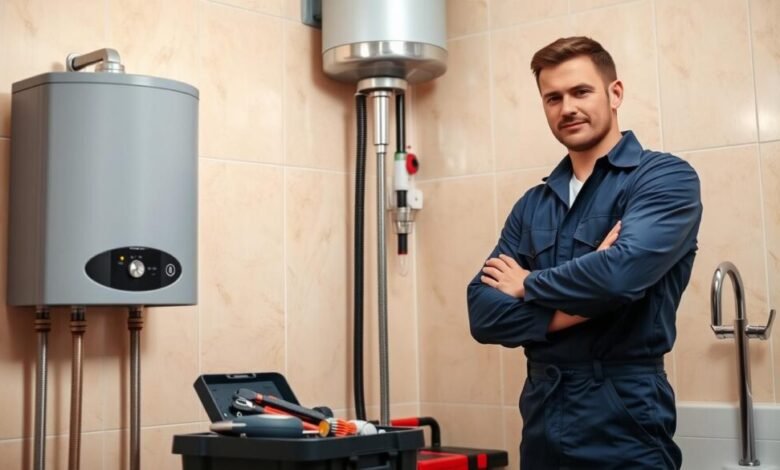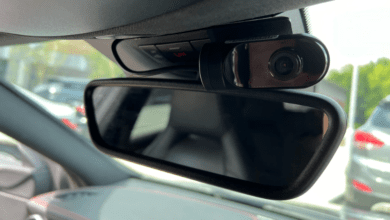Geyser Installation Guide: Common Mistakes to Avoid for Long-Term Performance

A geyser is one of the most essential home appliances, providing warm water for daily needs such as showers, washing, and cleaning. While choosing the right geyser is important, proper installation is equally crucial to ensure safety, efficiency, and long-term performance. Improper installation can lead to reduced lifespan, higher electricity bills, and even safety hazards.
This guide highlights common mistakes to avoid during geyser installation and provides expert advice to ensure your water heater operates optimally for years.
1. Ignoring Manufacturer Guidelines
One of the most common mistakes homeowners make is not following the manufacturer’s installation instructions. Every geyser comes with specific recommendations regarding mounting, plumbing connections, pressure limits, and electrical requirements.
Why it matters:
- Incorrect installation may void the warranty
- May lead to reduced efficiency or frequent breakdowns
- Safety features may not function correctly
Expert Tip: Always read the instruction manual thoroughly and adhere strictly to the guidelines provided by the manufacturer.
2. Choosing the Wrong Location
Selecting an inappropriate location for your geyser can affect its performance and lifespan. Many people install geysers in areas that are difficult to access or near heat-sensitive materials.
Key considerations:
- Install near water outlets to reduce heat loss
- Avoid direct sunlight or damp areas
- Ensure adequate clearance for maintenance and safety
Common Mistake: Installing a geyser in a bathroom corner where leaks can damage the flooring or walls. Always choose a dry, well-ventilated area.
3. Poor Mounting and Support
Geysers, especially storage models, can be heavy when filled with water. Improper mounting can cause stress on the wall, leading to accidents or tank damage.
Mistakes to Avoid:
- Using weak brackets or anchors
- Installing on hollow or fragile walls without proper reinforcement
- Overlooking the weight of the filled geyser
Expert Tip: Ensure that the wall can support at least 1.5 times the geyser’s full weight. Use high-quality screws, anchors, and brackets.
4. Incorrect Electrical Connections
For electric geysers, faulty wiring is a major cause of performance issues and accidents. Many homeowners underestimate the importance of proper electrical installation.
Common Issues:
- Using wires of insufficient gauge
- Absence of a dedicated circuit
- Not connecting an Earth Leakage Circuit Breaker (ELCB) or Residual Current Device (RCD)
Expert Tip: Always use professional electricians. Ensure the geyser has its own dedicated circuit and proper earthing to prevent fire hazards or electric shocks.
5. Ignoring Water Pressure Requirements
Water pressure plays a critical role in geyser efficiency. Installing a geyser in areas with high or low pressure without appropriate measures can damage the unit.
Common Mistakes:
- Connecting directly to high-pressure mains without a pressure-reducing valve
- Ignoring low-pressure issues, which may reduce hot water flow
Professional Tip: Install a pressure regulator for high-pressure areas and a booster pump for low-pressure areas. This ensures optimal performance and prevents leaks or tank bursts.
6. Improper Pipe Connections
Using low-quality pipes or incorrect plumbing connections can lead to leaks, corrosion, and reduced efficiency. Many DIY installations skip proper pipe fittings and joint sealing.
Mistakes to Avoid:
- Using plastic or thin pipes that can burst under heat
- Not sealing joints with PTFE tape or appropriate compounds
- Incorrect positioning of inlet and outlet pipes
Expert Tip: Use PEX or copper pipes with proper insulation. Ensure hot and cold water connections follow manufacturer specifications.
Read Also: Modern Techniques in CNC Swiss Machineing
7. Overlooking Safety Valves and Expansion Tanks
Safety valves are crucial for preventing excessive pressure buildup. Some homeowners skip this step or install valves incorrectly.
Common Mistakes:
- Not installing a temperature and pressure relief (T&P) valve
- Installing the valve too close to the tank or obstructing flow
- Ignoring expansion tanks in high-pressure areas
Expert Tip: Always install a T&P valve and, if necessary, an expansion tank. This prevents tank damage and water leakage while maintaining safety.
8. Skipping Insulation
Heat loss from uninsulated pipes or geyser tanks increases electricity consumption. Many homeowners overlook the benefits of insulation, which can save energy and improve comfort.
Professional Tip:
- Use insulated pipes to reduce heat loss
- Some storage geysers come with factory-insulated tanks; if not, consider external insulation blankets
Result: Faster heating, reduced energy bills, and longer-lasting components.
9. Not Scheduling Regular Maintenance
Even a properly installed geyser requires routine maintenance. Skipping maintenance can lead to corrosion, sediment buildup, and decreased efficiency.
Key Maintenance Tips:
- Flush the tank every 6–12 months to remove sediment
- Inspect the anode rod and replace if corroded
- Check safety valves and electrical connections regularly
Professional Tip: Maintain a maintenance log to track inspections and servicing.
10. DIY Installation Without Expertise
While DIY projects can be tempting, geyser installation requires technical skills. Improper electrical connections, plumbing mistakes, or incorrect mounting can cause accidents and reduce geyser life.
Expert Recommendation: Always hire certified technicians. Even small mistakes in installation can lead to expensive repairs or safety hazards in the long run.
Checklist for Proper Geyser Installation
- Read the manufacturer’s manual carefully
- Select a safe and accessible location
- Ensure wall support and mounting are strong
- Use dedicated wiring and proper earthing
- Install pressure regulators if needed
- Use high-quality, insulated pipes for connections
- Install T&P valves and expansion tanks
- Insulate pipes to minimize heat loss
- Schedule regular maintenance
- Avoid DIY installation unless professionally trained
Conclusion
Correct geyser installation is essential for long-term performance, energy efficiency, and safety. By avoiding the common mistakes outlined above, homeowners can enjoy consistent hot water, lower electricity bills, and a longer lifespan for their geyser.
Investing in professional installation and regular maintenance is a small upfront cost that pays off in reliability, comfort, and reduced repair expenses. Follow this guide, and your geyser will serve your household efficiently for years to come.



